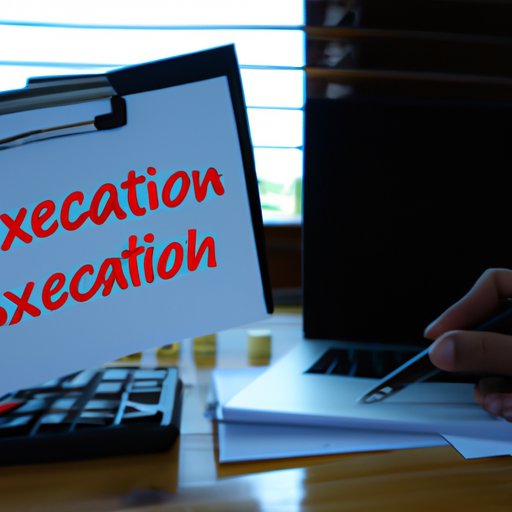Introduction
Depreciation is an accounting concept that refers to the decline in value of an asset over time. It is a way to spread out the cost of an asset over multiple years, rather than having to pay for it all at once. This article will explore the basics of depreciation and how it works, as well as provide a guide to understanding depreciation for business owners. We will take a look at the different types of depreciation and their impacts on businesses, the accounting process behind depreciation, how tax deductions are affected by depreciation, and strategies for maximizing depreciation benefits. Finally, we will discuss the benefits and drawbacks of depreciation for businesses.
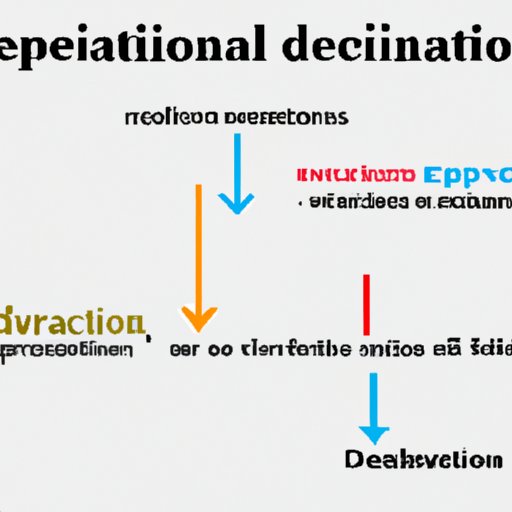
Exploring the Basics of Depreciation: What It Is and How It Works
Depreciation is an accounting concept that refers to the decline in value of an asset over time. It is used to spread out the cost of an asset over multiple years, rather than having to pay for it all at once. The purpose of depreciation is to recognize that an asset will not remain valuable forever, and to account for this decline in value over time. By recognizing the decline in value of an asset, businesses can more accurately reflect the true cost of an asset in their financial statements.
Depreciation is calculated based on the estimated useful life of an asset. This is the amount of time that the asset is expected to be used, or the amount of time it takes for the asset to become fully depreciated. The useful life of an asset can vary depending on the type of asset, but is typically anywhere from three to twenty years. Once the useful life of an asset has been determined, depreciation can be calculated using one of several methods, such as straight-line, accelerated, double declining balance, or sum-of-the-years’ digits.
A Guide to Understanding Depreciation for Business Owners
Understanding depreciation and how it works is essential for business owners. Depreciation is an important concept for businesses because it affects their finances and taxes. Here are some key points to keep in mind when it comes to understanding depreciation for business owners:
Reasons for Using Depreciation
The primary reason businesses use depreciation is to spread out the cost of an asset over multiple years. By recognizing the decline in value of an asset over time, businesses can more accurately reflect the true cost of an asset in their financial statements. This is especially useful for large purchases, such as equipment, which can be expensive to purchase outright.
Factors to Consider When Calculating Depreciation
When calculating depreciation, there are several factors to consider. The most important factor is the estimated useful life of an asset. The useful life of an asset is the amount of time that the asset is expected to be used, or the amount of time it takes for the asset to become fully depreciated. Other factors to consider include the type of asset, the purchase price, and the depreciation method being used.
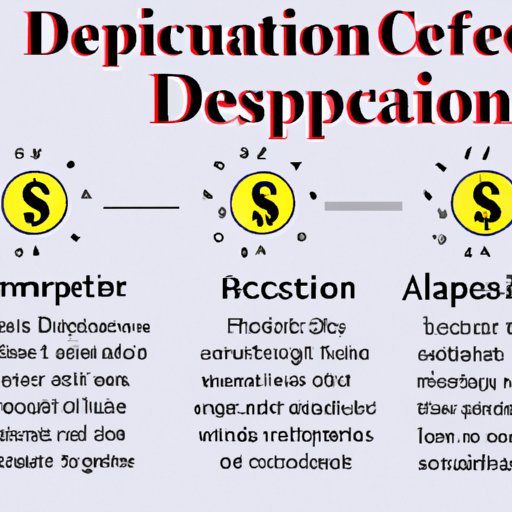
The Different Types of Depreciation and How They Impact Your Business
There are four main types of depreciation that businesses can use to calculate the decline in value of an asset over time: straight-line, accelerated, double declining balance, and sum-of-the-years’ digits.
Straight-Line Method
The straight-line method is the most common type of depreciation. It is calculated by dividing the purchase price of an asset by its estimated useful life. The resulting amount is then recognized as an expense each year, until the asset is fully depreciated.
Accelerated Method
The accelerated method is a more accelerated form of depreciation that recognizes larger amounts of depreciation in the early years of an asset’s life. The accelerated method is typically used for assets with shorter useful lives, such as computers. It is calculated by dividing the purchase price of an asset by its estimated useful life, then multiplying the result by a factor that increases each year.
Double Declining Balance Method
The double declining balance method is similar to the accelerated method, except that it doubles the rate of depreciation each year. This means that the amount of depreciation recognized each year is twice the amount recognized in the previous year. This method is typically used for assets with shorter useful lives, such as computers.
Sum-of-the-Years’ Digits Method
The sum-of-the-years’ digits method is a more complex form of depreciation that recognizes larger amounts of depreciation in the early years of an asset’s life. It is calculated by dividing the purchase price of an asset by the sum of its estimated useful life, then multiplying the result by a decreasing factor each year.
Explaining the Accounting Process Behind Depreciation
Once the type of depreciation has been determined, the next step is to record the depreciation expenses in the company’s financial statements. This is done by debiting the depreciation expense account and crediting the accumulated depreciation account. The depreciation expense account is used to track the amount of depreciation expenses recognized each year, while the accumulated depreciation account is used to track the total amount of depreciation that has been recognized since the asset was purchased.
After recording the depreciation expenses, the accounts must be adjusted. This is done by subtracting the amount of depreciation expense recognized from the asset’s original purchase price. This adjustment is necessary to ensure that the asset’s book value (the value of the asset as reported in the company’s financial statements) matches its current market value.
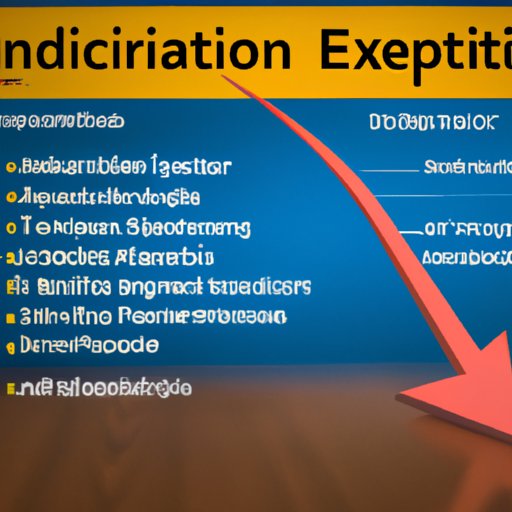
How Tax Deductions are Affected by Depreciation
Depreciation can also affect tax deductions for businesses. Depreciation is treated as an expense for tax purposes, meaning that businesses can deduct the amount of depreciation expense recognized each year from their taxable income. This reduces the amount of money that businesses owe in taxes. However, it is important to note that the amount of depreciation expense recognized each year cannot exceed the amount of the asset’s purchase price.
Strategies for Maximizing Depreciation Benefits
There are several strategies that businesses can use to maximize the benefits of depreciation. The first is to calculate depreciation accurately. This requires knowing the estimated useful life of an asset and choosing the right type of depreciation. The second strategy is to time depreciation costs. This involves timing the recognition of depreciation expenses to coincide with periods when the business expects to have higher taxable income. This maximizes the amount of depreciation that can be deducted from taxes.
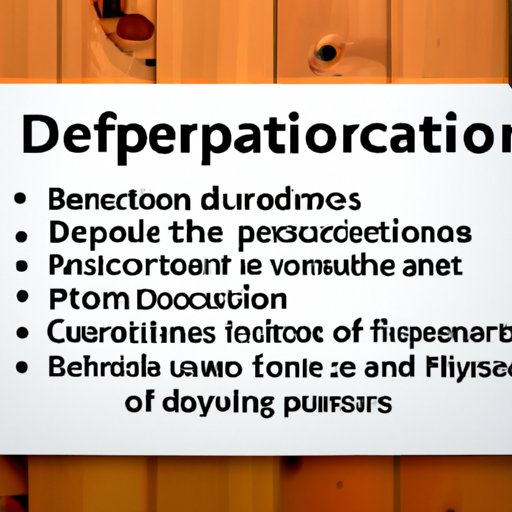
Benefits and Drawbacks of Depreciation for Businesses
Depreciation can be a beneficial tool for businesses, but it also has some drawbacks. The primary benefit of depreciation is that it allows businesses to spread out the cost of an asset over multiple years, rather than having to pay for it all at once. This makes large purchases more affordable for businesses. Additionally, depreciation can be used to reduce taxes by allowing businesses to deduct depreciation expenses from their taxable income.
However, there are also some drawbacks to using depreciation. One drawback is that the amount of depreciation expense recognized each year cannot exceed the amount of the asset’s purchase price. This means that businesses may not be able to fully recover the cost of an asset through depreciation. Additionally, businesses must be careful to calculate depreciation accurately, as incorrect calculations can lead to inaccurate financial statements.
Conclusion
Depreciation is an accounting concept that refers to the decline in value of an asset over time. It is a way to spread out the cost of an asset over multiple years, rather than having to pay for it all at once. This article has explored the basics of depreciation and how it works, as well as provided a guide to understanding depreciation for business owners. We have taken a look at the different types of depreciation and their impacts on businesses, the accounting process behind depreciation, how tax deductions are affected by depreciation, and strategies for maximizing depreciation benefits. Finally, we discussed the benefits and drawbacks of depreciation for businesses.
(Note: Is this article not meeting your expectations? Do you have knowledge or insights to share? Unlock new opportunities and expand your reach by joining our authors team. Click Registration to join us and share your expertise with our readers.)
